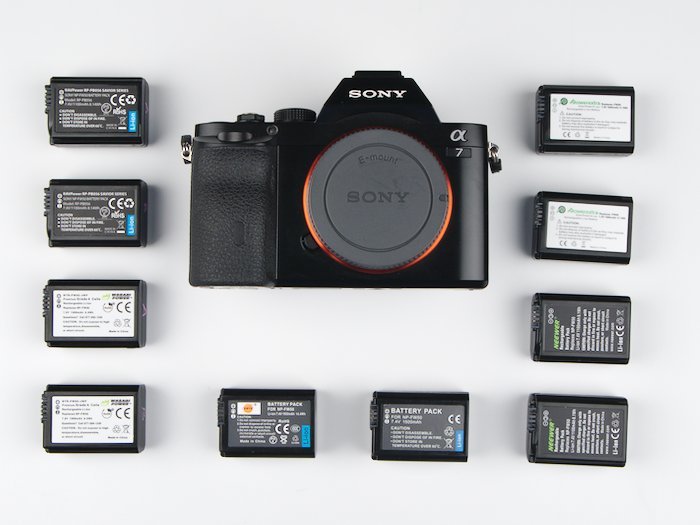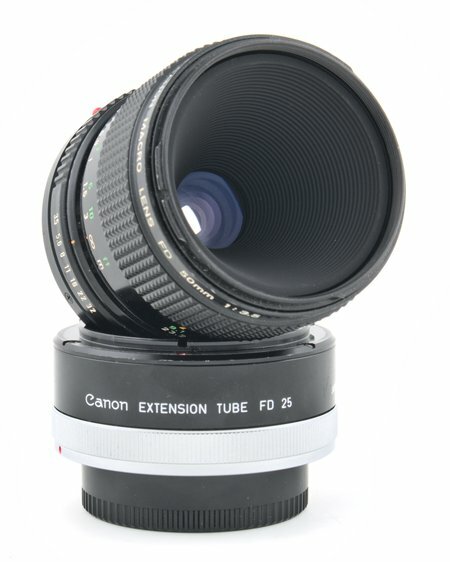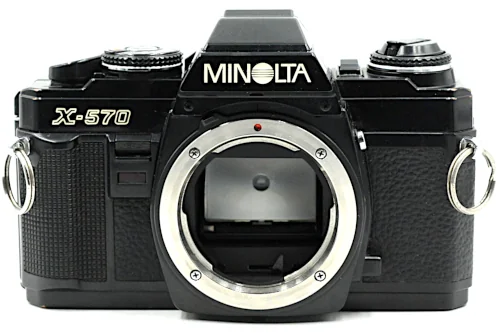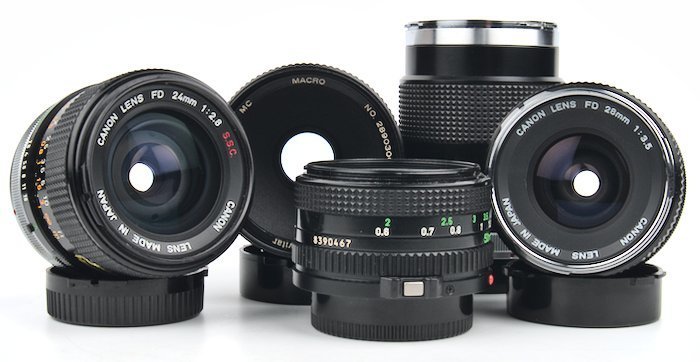
The 5 Best Canon New F1 Camera Lenses
- Nathaniel Stephan
- Canon new f 1
- March 17, 2020
Table of Contents
The New F1 is a terrific camera.
This page will discuss the best 5 lenses to use with the New F1 camera.
Affiliate Advertising Disclosure
Outside the Shot is a participant in the Amazon Services LLC Associates Program, an affiliate advertising program designed to provide a means for sites to earn advertising fees by advertising and linking to Amazon.com.
As an eBay Partner, I may be compensated if you make a purchase. I also participate in affiliate advertising programs with KEH and Adorama. More can be found on the Affiliate Disclosure page.
Additional details are below, however below is the list if you are limited on time:
- Kit Lens - Canon FD 50mm f/1.8 (eBay)
- Wide Angle Lens - Canon FD 28mm f/3.5 (Amazon)
- Portrait Lens - Canon FD 100mm f/2.8 (Amazon)
- Zoom Lens - Vivitar Series 1 70-210mm f/3.5 (eBay)
- Macro Lens - Vivitar 90mm f/2.8 (eBay)
Kit Lens and Standard Primes
Canon FD 50mm f/1.8
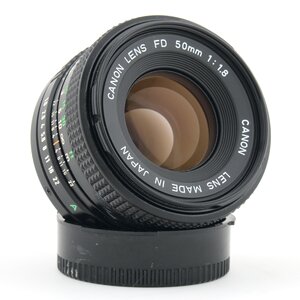
The Canon FD 50mm F/1.8 lens was the “kit Lens” often sold with the New F1. The 50mm f1.8 is easily found for sale online, has terrific image quality, and is low-priced.
- The “classic” setup as it can be considered the original kit lens.
- Unbeatable value.
- Light and compact.
- Widely available and easy to find in good condition.
- Uses 55mm filter threads.
Check a variety of places to find the best condition and price.
See current price and more information on:
For a 50mm camera lens of photography, a 50mm lens is a fantastic choice. The aspects of photography consist of travel, street, landscapes, casual use, portraits, and architecture. This is the most frequent focal length that is paired with the New F1.
The lens is well balanced, small, and light. The lenses weigh anywhere from 170-305g, based on on the version of the lens. The new FD version, which was the last to be released, is the lightest.
Canon also designed 2 faster 50mm lenses for the Canon FD lens mount.
Canon FD 50mm f/1.4
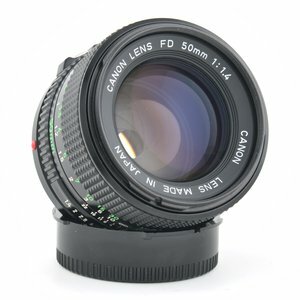
At the additional cost of weight, the Canon FD 50mm f/1.4 is 2/3 of a stop faster. It is not that much more expensive than the f1.8.
- Excellent image quality.
- Optical multi-coatings.
- Fairly easy to find in good condition.
- Larger and heavier than the f/1.8.
The 50mm f/1.4 comes in 4 different variants. The “new FD” variant is the lightest and newest out of the choices.
See current price and more information on:
This lens is bulky, heavy, and challenging to focus lens. Shot wide open, pictures will not be sharp. If you stop the lens down to f/1.8 or f/1.4 you will not notice much of a difference between it and the other lenses.
The two versions of the lens are expensive. The cost of the lens is as a result of rarity and collectibility, not optical superiority.
Alternative Standard Lenses
If the 50mm focal length isn’t what you are looking for, here are additional options. You might have to spend additional money than you would for a 50mm lens with a similar aperture.
- Canon FD 35mm f/2 SSC
- Canon FD 35mm f/2.8
- Canon FD 35mm f/3.5
- Canon FD 55mm f/1.2
Wide Angle Lens
Canon FD 28mm f/3.5
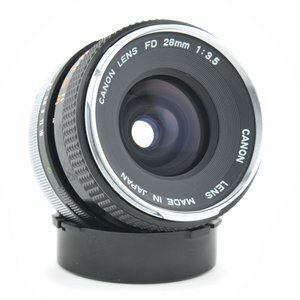
A widespread focal length for street photography is 28mm. However, the most common use for wide-angle lenses are architectural and landscape photography.
- Great combination with a 50mm lens.
- Optical multi-coatings.
- Inexpensive and widely available.
- Small and light.
See current price and more information on:
My top pick is the Canon FD 28mm f/2.8 owing to the cheaper price, ease of finding a copy, and superb optics.
Alternative Wide Angle Lenses
In terms of cost, the correlation is straightforward. The wider the field of view, the less affordable the lens will be. Larger apertures also go for appreciably more.
Weight will change depending on the characteristics of the lens. You will see lenses from 170g to 500g. Faster apertures will also mean that those lenses will be bulky and cause the camera to be front heavy.
- Canon FD 7.5mm f/5.6 Fisheye
- Canon FD 14mm f/2.8L
- Canon FD 15mm f/2.8
- Canon FD 17mm f/4
- Canon FD 20mm f/2.8
- Canon FD 24mm f/1.4
- Canon FD 24mm f/2
- Canon FD 24mm f/2.8
- Canon FD 28mm f/2
- Canon FD 28mm f/2.8
Portrait & Telephoto Lens
Canon FD 100mm f/2.8
The 85mm lens wasn’t as widely used when the New F1 was first released. Instead, the 135mm focal length was the first choice for a lens for portraits.
- Excellent portrait lens.
- Less expensive 85mm alternative.
- Great value.
- Inexpensive.
See current price and more information on:
If you want to take portrait photos with the New F1, there are a bunch of short telephoto lenses to choose from. The 100mm f/2.8 lens is one of the least expensive options around.
An 85mm lens will have the highest price, with 135mm lenses sitting in the middle of the range of prices.
Seeing that every one of the Canon FD telephoto lenses will be manual focus, they are much more compact than modern versions. Clearly, something like the Canon FD 85mm f/1.2L will be heavy and large because of the quantity of glass in the lens.
Expect to see very low prices for the Canon FD 100mm f/2.8. There’s also a 100mm f/4 macro version of the lens. It will probably cost more and is not the ideal choice for portraits as it needs to be stopped down.
Alternative Telephoto Lenses
Additionally, the Canon FD 135mm f/2.8 is among the most affordable prime lenses you can acquire. You will be required to dig through a good number of listings for thirdparty 135mm lenses that won’t be anywhere near as good as a Canon lens.
There are a handful of 85mm lenses to choose from. The most desireable is the Canon FD f/1.2L lens. A less pricey substitute is the Canon FD 85mm f/1.8 lens, but it is considerably higher priced when compared to the various telephoto lenses above.
- Canon FD 85mm f/1.2L
- Canon FD 85mm f/1.8
- Canon FD 100mm f/2
- Canon FD 135mm f/2.5
- Canon FD 200mm f/2.8
- Canon FD 200mm f/4
New F1 Zoom Lenses
Canon FD 35-105mm f/3.5 & Vivitar Series 1 70-210mm f/3.5
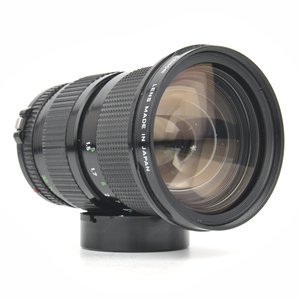
The flexibility of combining a New F1 along with a zoom lens is tempting. Being able to use a range of focal lengths without having to swap a lens is great.
Take into account that these are older zoom lenses.
- Haze and or Fungus
- Large amount of dust in the lens
- Loose or tight zoom ring
- Loose or tight focus ring
- Oil on the aperture blades
- Decentered lens elements
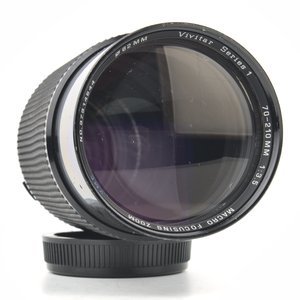
Additionally, you need to keep in mind the drawbacks the lenses have even when in excellent condition.
- Image quality will not be good when shot wide open.
- One or both ends of the focal range may suffer from a large amount of distortion.
- Zoom lenses are larger and generally heavier than primes.
Alternative Zoom Lenses
When it comes to price, most older zoom lenses are cheap.
- Canon FD 70-210mm f/4
- Canon FD 80-200mm f/4L
- Canon FD 28-85mm f/4
Macro Lens
Vivitar 90mm f/2.8 & Vivitar 55mm f/2.8
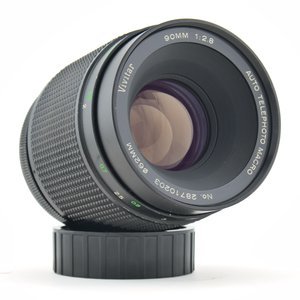
- My favorite vintage macro lens.
- Available in multiple lens mounts.
- Incredible value.
- Sharp corner-to-corner at f/8.
See current price and more information on:
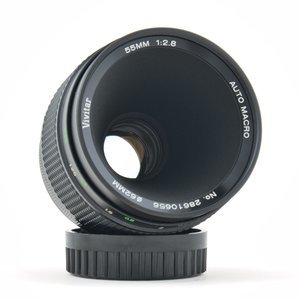
- My second favorite vintage macro lens.
- An excellent choice for close-up photography.
- It does not need an extension tube to reach 1:1 magnification.
See current price and more information on:
The two suggested macro lenses were made by Komine in Japan. The lens was also sold under several brand names. Spiratone, Rokunar, Elicar, Quantaray, and Panagor are names you can see on a copy of the lens.
There is a Vivitar 90mm f/2.8 Macro Lens Review and a Vivitar 55mm f/2.8 Macro Lens Review.
For capturing photos at macro magnification (1:1), the 90mm lens is without a doubt the better pick since it has a greater working distance.
The 55mm lens is ideal for table-top and close-up photography.
Alternative Macro Lenses
- Canon FD 50mm f/3.5
- Canon FD 100mm f/4
- Canon FD 200mm f/4
Used FD Camera Lens Prices
Price ranges change regularly. During the past 3-4 years, involvement in film photography has been increasing. Because of that, prices have slowly increased.
The best option is to review prices from a lot of online stores. Immediately pay for a fantastic deal the moment you find one mainly because the best deals are purchased the quickest.
What Lens Mount Does the Canon new F-1 Use?
The New F1 utilises the Canon FD lens mount. Canon used the FD mount for film cameras built from 1971 - 1992.
Here is a list of all the cameras that have a Canon FD mount.
The Canon FL lens mount was replaced by the FD mount, which was utilized from 1964 - 1971. FL mount lenses can be used with the New F1, but you will need to use stopped down metering.
Standard Lens Cap Size
The standard lens cap and filter ring thread diameter for Canon FD lenses is 55mm.
Employing a standardized filter thread size is good since you are only required to obtain and bring a single set of filters.
A handful of telephoto and zoom lenses have bigger filter ring thread diameters because they have enormous front lens elements.
FD vs FL Lens Mount
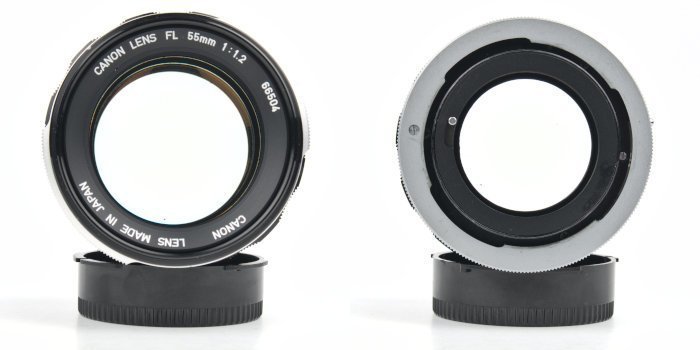
The Canon FL lens mount preceded the FD mount. You are able to use FL lenses on the FD mount, and FD lenses can be used on the FL mount.
What Canon FL lenses are unable to automatically do stop-down metering. What this means is the lens need to be stopped down by using the depth-of-preview switch to enable the New F1’s light meter to display the proper reading.
FD vs new FD Lenses
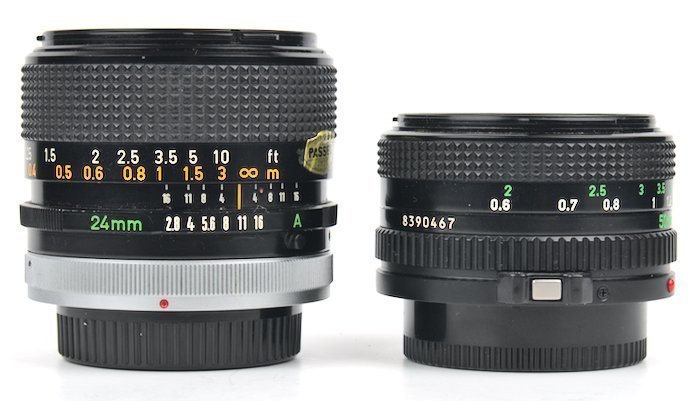
The whole new FD lens rotates to lock onto the New F1. Compared to original FD lenses which have a breech-lock ring at the rear of the lens that needs to be tightened to be able to mount a lens to the camera.
New FD and FD lenses are interchangeable with each other. There will be no compatibility issues.
In some cases you will spot new FD lenses referred to as FDn lenses.
The update in the design of the breech-lock ring was mainly because of complaints. A small number of users had lenses getting stuck on a FD camera mount.
If you are not familiar with attaching an FD lens to a camera, don’t be anxious. Simply just take the process slow and don’t force anything.
Telling FD and FDn Lenses Apart
It is easy to tell FD and new FD lenses from one another. New FD lenses have a silver button located on the outside of the lens, near the mount.
The older FD lenses have a metal ring that needs to be rotated in order to lock the lens to the camera mount.
